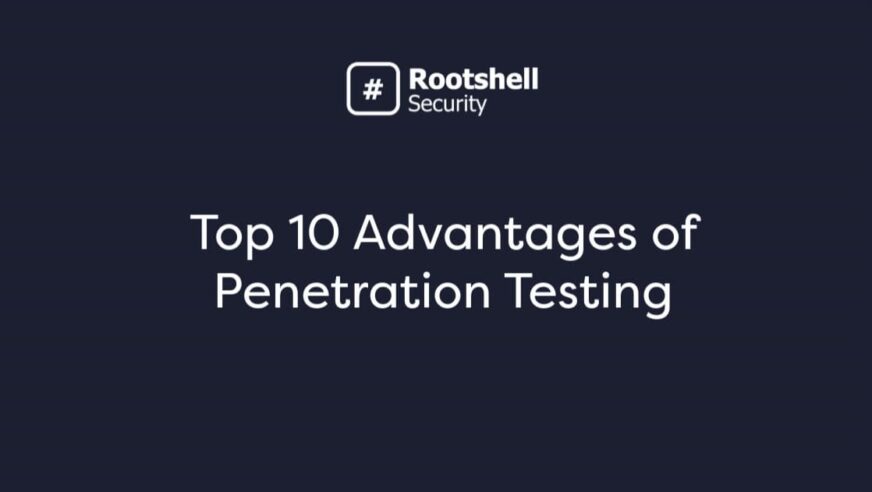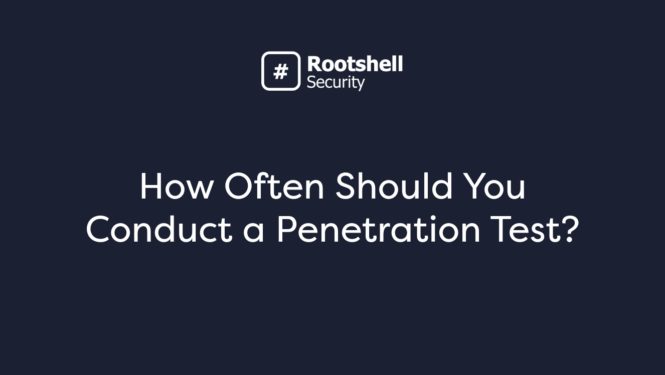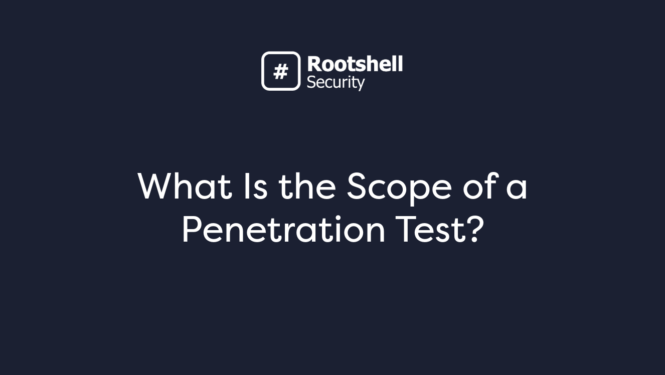With cyber attacks becoming a lot more sophisticated, businesses of all sizes are left exposed to risks that can disrupt operations, damage reputations, and cause major financial losses. Traditional security measures such as firewalls and antivirus software are no longer enough on their own. organizations need to understand how their systems hold up against real-world threats.
Penetration testing is a controlled simulation of a cyber attack, carried out by security professionals to assess the vulnerability of a system. Instead of waiting for malicious attackers to exploit weaknesses, companies can proactively find these flaws before they are abused.
In this article, we will explore further the various types of penetration tests available, compare different testing methods and outline the top ten advantages of using penetration testing to strengthen your security.
What is Penetration Testing?
A penetration test involves a tester attempting to breach systems like a hacker, but within an agreed scope and under safe conditions. The results highlight security gaps, misconfigurations, or weaknesses in applications and infrastructure that require attention.
The process often ends with a detailed report that includes the vulnerabilities found, the potential impact of these flaws, and recommended steps to strengthen defenses.
According to a report by Fortune Business Insights, the global penetration testing market is projected to be worth USD 2.74 billion in 2025, with expectations to grow to USD 6.25 billion by 2032, representing a compound annual growth rate (CAGR) of 12.5%.
Types of Penetration Testing
There are several categories of penetration testing, each designed to focus on different aspects of security. Choosing the right type depends on the objectives of the test and the systems under review.
1. Network Penetration Testing
This targets both internal and external networks. Testers look for weaknesses in routers, firewalls, servers, and other connected devices that could be exploited to gain unauthorized access.
2. Web Application Penetration Testing
Applications that handle sensitive data are prime targets for attackers. Web application penetration testing identifies issues such as SQL injection, cross-site scripting, authentication flaws, and other coding-related vulnerabilities.
3. Mobile Application Penetration Testing
With mobile devices central to business operations, mobile app testing examines potential entry points for attackers through iOS or Android applications.
4. Wireless Penetration Testing
Wireless networks can expose organizations if they are poorly configured. Wireless penetration tests analyse encryption protocols, rogue access points, and other weaknesses.
5. Social Engineering Testing
Rather than exploiting technical flaws, social engineering focuses on human factors. Examples include phishing attempts or methods to persuade employees to disclose confidential information.
6. Physical Penetration Testing
Sometimes overlooked, physical penetration testing involves attempts to access physical locations to test the strength of locks, ID checks, and access controls.
Each type of test provides useful data, and many organizations choose a combination to achieve a full picture of their security position.
Penetration testing (pen testing) is a structured process designed to identify and exploit vulnerabilities in systems, applications, or networks. It’s not just hacking for fun—it’s a controlled, methodical way to improve security. The stages of pen testing generally follow a standard framework, often broken down into five to six key phases:
Stages of Penetration Testing
1. Planning
Before any penetration testing gets underway, the scope and objectives must be clearly defined. This involves figuring out what exactly you will be testing, establishing the rules of engagement for ethical and safe testing, setting timelines for each phase of the assessment, and getting the necessary legal authorisations or permissions.
Proper planning at this stage means that the testing process is controlled, focused, and compliant with organizational and regulatory requirements.
2. Scanning
The scanning stage of a penetration test involves actively examining the target systems to identify potential vulnerabilities and entry points.
During this phase, testers use a combination of automated tools and manual techniques to map out the network, detect open ports, discover running services, and gather detailed information about system configurations.
Vulnerability scans highlight outdated software and weak security controls. The goal of this stage is to build a stronger understanding of the target environment, pinpoint areas that could be exploited, and prioritize them for the next phase of testing.
3. Exploitation
The exploitation phase is where found weaknesses are tested to determine whether they can be used to gain unauthorized access. During this stage, penetration testers attempt to exploit weaknesses by using a combination of manual techniques and tools.
The objective is not simply to prove a vulnerability exists, but to assess the potential impact an attacker could have if they successfully compromise the system.
4. Maintaining Access
This part of the process focuses on assessing how long an attacker could remain undetected within a compromised system and the potential for sustained exploitation.
During this phase, testers mimic methods a real attacker might use to stay in the system, such as installing backdoors, creating hidden user accounts, or using remote access tools.
The goal is to assess the effectiveness of the organization’s monitoring and detection systems, as well as its ability to respond to threats.
5. Analysis and Reporting
All findings from the penetration test are carefully documented in a report. This report details each vulnerability that was identified, explains how it was exploited during testing, and assesses the potential impact on the organization if it were to be exploited by a malicious actor.
The report also provides clear recommendations for remediation, including steps to fix the vulnerabilities, improve security controls, and prevent similar issues in the future. A well-prepared report means that stakeholders have a thorough understanding of their security and can prioritize measures to reduce risk.
Top 10 Benefits of Penetration Testing
The following advantages explain why penetration testing is thought of as an important part of any cybersecurity strategy.
1. Finds Weaknesses Before Attackers
The first and potentially most important benefit of penetration testing is the early discovery of weaknesses. Cyber criminals are constantly searching for flaws to exploit, and waiting until a breach happens can be very dangerous. Penetration tests allow businesses to fix issues before they are exploited, providing a preventative layer of defense.
2. Provides Realistic Insights into Security Gaps
Unlike automated scanners that flag potential problems, penetration testing shows how an attacker could exploit a weakness in practice. This produces a realistic picture of the risks faced by the organization. Management teams can better understand which weaknesses pose the highest threat and prioritize how and when to fix them accordingly.
3. Strengthens Compliance with Industry Standards
Many industries are subject to regulations that require regular security testing. Standards such as PCI DSS, ISO 27001, and GDPR all encourage or require penetration testing as part of ongoing compliance. Carrying out regular tests demonstrates a commitment to data protection and helps organizations avoid fines and reputational damage.
4. Protects Customer Trust and Brand Reputation
A single breach can permanently damage how customers view a company. Loss of data can lead to public scrutiny and declining confidence. Addressing vulnerabilities through continuous penetration testing shows that you are taking your security seriously, which helps keep trust with clients, partners, and stakeholders.
5. Supports Better Security Planning and Investment
The results of a penetration test highlight which areas need attention and which security tools are performing as intended. This clarity helps security teams and executives make better decisions about where to allocate resources, whether that means investing in updated software, staff training, or additional monitoring.
6. Demonstrates the Effectiveness of Existing Security Measures
organizations invest heavily in firewalls, intrusion detection systems, and encryption technologies. However, without testing, it can be difficult to know whether these measures are working. Penetration testing validates their performance under simulated attacks, confirming whether they hold up in practice.
7. Improves Incident Response Capabilities
When a penetration test is carried out, it allows security teams to practise responding to an intrusion. This helps them refine their procedures, communication channels, and response times. Being prepared in advance reduces the damage that could occur during a real attack.
8. Encourages Ongoing Security Awareness
Penetration tests often uncover not only technical flaws but also human vulnerabilities, such as weak passwords or a tendency to fall for phishing emails. Highlighting these findings encourages better awareness among staff and promotes a culture of caution when handling data and systems.
9. Helps Avoid Financial Losses from Breaches
Cyber incidents are extremely costly. The expenses include data recovery, legal action, fines, and loss of business. While penetration testing involves an upfront investment, the cost is small compared to the potential losses of a major breach. Regular testing reduces the likelihood of suffering from these expensive incidents.
10. Provides Assurance to Stakeholders
Boards, investors, and customers expect organizations to take cybersecurity seriously. Being able to present the results of regular penetration tests shows that risks are being assessed and addressed. This assurance can strengthen relationships with stakeholders and improve business opportunities.
How Rootshell Security Can Help
One-off tests are great for what they achieve, but new vulnerabilities are discovered fairly frequently, and systems change as businesses grow and adopt new technology. For this reason, penetration testing should not be treated as a single exercise, and companies should consider regular penetration testing.
Different types of tests are available depending on the needs of your business – you can personalize the process to fit your requirements.
Rootshell Security’s penetration testing service provides clear, practical guidance to help protect your systems. With accredited testers, you can rely on our team to deliver thorough testing tailored to your business requirements.
Types of Vulnerability Scans
Vulnerability scanning can be categorized into several types, each serving a different purpose in identifying and reducing weaknesses in your current security. Understanding the different types helps your company to apply the right scan for the right environment or security objective.
1. Network-Based Scanning
This identifies vulnerabilities in your internal or external network systems, like open ports, misconfigured firewalls, and outdated protocols.
2. Host-Based Scanning
Focuses on individual devices or servers to detect operating system weaknesses, insecure configurations, or missing patches.
3. Application Scanning
Targets web applications and APIs to uncover vulnerabilities like SQL injection, cross-site scripting (XSS), or insecure authentication methods.
4. Wireless Network Scanning
Checks for weaknesses in wireless setups, such as rogue access points or insecure encryption.
5. Database Scanning
Assess the security of databases and associated services, including access controls, data exposure, and unpatched software.
6. Credentialed vs. Non-Credentialed Scanning
- Credentialed scans use login credentials to simulate insider access, offering deeper insight into internal system vulnerabilities.
- Non-credentialed scans mimic an external attacker without access credentials, testing perimeter security.
Features to Look for in a Vulnerability Scanning Tool
Asset Discovery
A good vulnerability scanning tool should automatically discover and log all assets, including devices, applications, operating systems, cloud services, and IoT or legacy systems.
Broad Vulnerability Database
The broader the database, the more thorough the scan in identifying risks across different applications and configurations. A good vulnerability scanning tool should also offer real-time updates, meaning that new vulnerabilities are immediately incorporated into the database. Integrating the database with threat intelligence feeds also means that the tool can stay up to date with threats.
Agentless Approach
An agentless approach to vulnerability scanning lets tools assess systems remotely without installing software on each device. It simplifies deployment, lowers resource use, and reduces the risk of compromised scans, ideal for large or distributed networks. However, it may provide less detailed insights than agent-based scanning, especially where deeper visibility is required.
Support for Internal and External Scanning
A good vulnerability scanning tool should also support both internal and external scanning to provide a complete security overview and protect your attack surface.
External scanning focuses on identifying vulnerabilities in internet-facing assets, whereas internal scanning examines the internal network to detect vulnerabilities within servers, databases, and applications..
Integration with Remediation Tools
A vulnerability scanning tool should integrate with remediation tools or patch management systems to simplify the process of fixing vulnerabilities. When a vulnerability is detected, the scanning tool can trigger automated workflows that send alerts, assign tasks, or initiate efforts to fix the problem through your existing patch management system..
Vulnerability Scanning vs Penetration Testing
Vulnerability scanning and penetration testing are both fundamental methods of evaluating an organisation’s cybersecurity, but they differ in approach and purpose. Vulnerability scanning is typically automated and designed to find known flaws across systems, while penetration testing is a manual, simulated attack that goes further by actively exploiting weaknesses to assess real-world impact.
Here’s a quick overview of the differences between vulnerability scanning and penetration testing:
Aspect | Vulnerability Scanning | Penetration Testing |
Purpose | Identifies known vulnerabilities | Goes further and exploits vulnerabilities to assess real-world risk |
Depth | Broad, surface-level analysis | Deep, targeted exploration |
Method | Automated tools | Manual techniques |
Frequency | Performed regularly | Conducted periodically |
Scope | Large systems or networks | Narrower, defined scope |
Skill Level Required | Lower (automated interpretation possible) | Higher (requires expert ethical hackers) |
Cost | Typically lower | Typically higher |
Compliance Role | Helps meet ongoing compliance standards | Often required for audits or specific regulatory assessments |
Both vulnerability scanning and penetration testing play important roles in a strong cybersecurity strategy. You should not view them as interchangeable but rather complementary. Regular vulnerability scans help you stay on top of known issues, while periodic penetration tests uncover more complex, hidden risks.
The National Institute of Standards and Technology further stresses that interpreting scan results still requires human input to ensure accuracy, highlighting the importance of combining automated tools with expert oversight. For a well-rounded approach, combining both methods ensures continuous monitoring, accurate analysis, and in-depth risk assessment.
Vulnerability Scanning vs Vulnerability Management
Vulnerability scanning provides a snapshot of vulnerabilities at a specific point in time. Vulnerability management, on the other hand, is a broader, continuous process that includes not only scanning but also the analysis, prioritisation, remediation, and tracking of those vulnerabilities over time.
While vulnerability scanning is a part of vulnerability management, strong security requires going beyond the detection phase to ensure that vulnerabilities are properly managed, fixed, and monitored on an ongoing basis. You can think of vulnerability scanning as a subset of vulnerability management.
Challenges in Vulnerability Scanning
When performing vulnerability scans, you may encounter some challenges. There could be some technical limitations, resource constraints, or issues with the tools themselves.
Challenge | Impact | Action to Take |
False Positives | Wasted resources addressing non-issues; real threats may be overlooked. | Use multiple scanning tools and manually review flagged vulnerabilities to confirm actual risks. |
False Negatives | Undetected vulnerabilities can lead to breaches or data loss. | Regularly update scanning tools and manually review assets to catch hidden threats. |
Scan Performance & Downtime | Large scans may slow systems or cause downtime, disrupting business operations. | Schedule scans during off-peak hours, prioritize high-risk assets, and use distributed scanning methods. |
Complexity in Configuration | Poor configuration can result in missed vulnerabilities or inaccurate scan results. | Use automated templates, train teams regularly, and test configurations before full deployment. |
Limited Coverage | Assets like legacy systems or IoT devices may be excluded, leaving security gaps. | Conduct thorough asset discovery, maintain a full inventory, and update scan scopes regularly. |
Resource Constraints | Scanning large networks consumes significant time and computing resources, increasing costs. | Use scalable or cloud-based tools, and prioritize high-risk assets to maximize efficiency. |
Lack of Remediation Integration | Poor integration with patch systems delays vulnerability resolution and complicates prioritization. | Automate workflows, integrate scanning with patch tools, and establish a clear remediation plan. |
Changes in Environment | Dynamic IT environments can cause scans to become outdated quickly, leading to inaccurate risk assessments. | Automate asset discovery and scanning, and run scans regularly to stay up to date. |
Compliance Requirements | Non-compliant scans risk legal and financial penalties. | Use compliance-aligned tools, align scan schedules with audit deadlines, and stay updated on industry regulations. |
Lack of Skilled Personnel | Limited expertise delays remediation and increases the risk of overlooking serious vulnerabilities. | Provide staff training, use automated reporting, and consider outsourcing to cybersecurity professionals if internal resources are limited. |
To overcome these challenges, you need to take a strategic and proactive approach. This includes not only selecting the right tools but also making sure they are properly configured, regularly updated, and integrated with other security processes. Clear documentation, staff training, and automation can all help streamline operations and reduce manual workload.
Most importantly, scanning should never be seen as a one-off task; it must be part of a continuous vulnerability management cycle that includes discovery, prioritisation, remediation, and verification.
Integrating Vulnerability Scanning into Your Cybersecurity Strategy
Integrating vulnerability scanning into your approach to cybersecurity, organisations make it easier to find and reduce security risks before they can be exploited. To get the most from vulnerability scanning, organisations should define how often scans are run, based on risk tolerance and the threats they are up against. You should establish clear vulnerability management processes, allocate appropriate resources, and regularly review your strategy. It’s also important to encourage a culture of cybersecurity by educating employees on their role in keeping systems secure. When integrated properly, vulnerability scanning becomes a powerful tool that helps strengthen your security and reduce risk across the business.
Book a demo with Rootshell Security to learn how our expert-led vulnerability scanning and management solutions can support your cybersecurity goals today.



